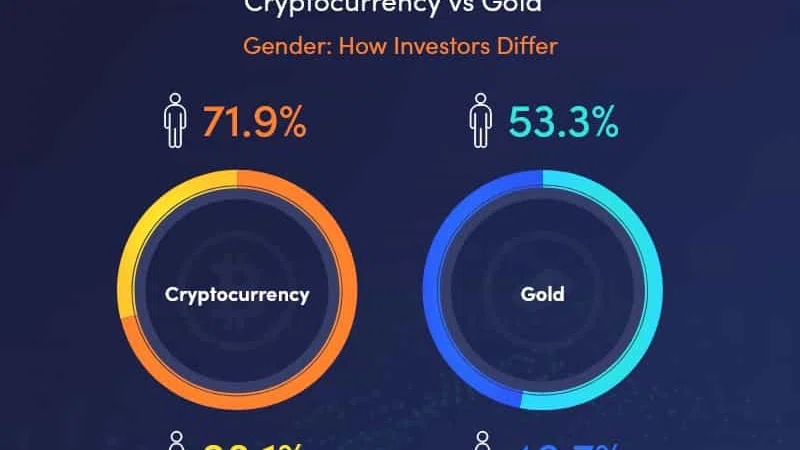Amara’s Law: “We tend to overestimate the effect of a technology in the short run and underestimate the effect in the long run.”
I do not doubt that, by now, you have realised that the rethinking of digital financial infrastructure is underway!
My opinion is that digital assets are getting closer to the inflection point on the hype cycle and, thus, their mainstream adoption seems to be much nearer than we previously thought.
Knowing that is of crucial importance, especially for financial institutions, since it can influence the development of their business strategy.
What are prerequisites for widespread adoption of digital assets?
In this article I will be talking about all the foundational building blocks of digital financial infrastructure necessary for digital asset adoption:
- firstly, regulations — since they are providing trust and confidence, which is fundamental to any market;
- secondly, secure institutional grade custody solutions — that are needed to safeguard the assets, and
- thirdly, institutional trading platforms — which are going to provide global liquidity.
In addition, I will mention digital asset neo-banks since the recent launch of a few fully compliant digital assets banks creates a vital bridge between the traditional centralised financial system and the nascent decentralised digital asset ecosystems. Why do I think that this is an important development? Because, it will enable the new digital asset ecosystems to access the traditional financial infrastructure for settlement.
I will also be discussing some newly created CeDeFi offerings by PayPal, Visa and Mastercard which, as the name indicates, combine the best of both centralised and decentralised financial systems.
And finally, I thought I should also include a few paragraphs on stablecoins and CBDCs due to their potential impact.
Stablecoins can help banks to cut costs in international transfers and data processing as well as facilitate interbank business-to-business money movement. Besides, stablecoins will enable banks to fully digitalise their back offices.
When it comes to CBDCs, they will make near real-time settlement of transactions on a peer-to-peer basis possible round-the-clock. Moreover, CBDCs represent credit risk free money.
Another benefit is that settling of cross-border interbank transactions via a CBDC will significantly reduce transaction costs. For instance, it has been estimated that a commercial bank can save up to €37 million annually.
1. Regulatory landscape is evolving
Many of the regulatory and legal issues regarding digital assets are still to be resolved.
Good news is that the regulators are starting to release frameworks and guidelines on how various types of digital assets and their services will be regulated.
In the European Union, Germany seems to be one of the most progressive states. The federal German government published a bill to enable financial institutions to issue electronic securities (bearer bonds) and custody digital assets as a new type of ‘financial service’ by incorporating it into the German Banking Act. As a result, many financial institutions are in advanced stages of their digital asset offering, and more than 40 institutions have expressed interest in applying for a custody license.
As far as Switzerland is concerned, a tokenised securities law called the ‘Blockchain Act’ took effect last month. The Act updated the legislation regarding the trading of digital securities, the segregation of crypto-based assets in the event of bankruptcy, and created a new category for ‘DLT trading facilities’ (crypto exchanges).
Needless to say, clear and consistent regulatory guidelines are needed on the international level.
2. Institutional-grade custodians are critical for the adoption of digital assets
An institutional-grade custody is the single most important missing piece of infrastructure that is holding back the mainstream adoption of digital assets in the financial services sector.
Thus, there is an opportunity to capitalise on the emerging digital asset market and enter the crypto custody space.
Effectively, big banks, who are traditionally custodians on premise, have the following three options: build their own custody infrastructure and get it regulated, buy a custody technology from a vendor and get it regulated, or partner with a third party technology provider, i.e. an existing regulated custodian.
A rough estimate is that building one’s own custody solution would probably take between 6–12 months.
3. Institutional-grade digital asset marketplaces are another prerequisite for widespread adoption
Digital market infrastructure that supports digital asset trading has been under construction for some time now. This year we can expect to see some of the exchanges go live. (Having different trading models for different levels of liquidity per digital asset will be crucial.)
For example, Swiss Digital Exchange, a fully integrated issuance, trading, settlement and custody infrastructure for digital assets has already been built and is inching closer to regulatory sign-off. It will begin trading later this year.
Another example is Archax, an exchange regulated by the FCA as an SME Growth Market. It will provide new efficient primary channels for capital raising as well as a secondary market for digital instruments. The aim is to offer periodic auctions for less liquid assets and a full central limit order book for those traded more frequently.
On the operational side, for instance, Tokeny Solutions, a Luxembourg-based fintech company, has been building their technology to support the full transferability of both OTC and exchange traded digital securities.
Naturally, the liquidity is essential for an exchange to attract investors. However, until the whole ecosystem evolves, there will probably be less liquidity in the digital assets listed on these exchanges.
4. Can digital asset neo-banks challenge commercial and investment banks?
In 2019, Swiss supervisory authority FINMA licensed SEBA and Sygnum as fully-fledged banks offering a comprehensive range of services both on the traditional as well as on the digital assets side of banking. This paved the way for the integration of digital assets into the mainstream economy.
After a successful start in its domestic market, SEBA Bank now accepts institutional and private professional clients from Singapore, Hong Kong, the U.K., Italy, Germany, France, Austria, Portugal, and the Netherlands.
Across the Atlantic Ocean, Anchorage Digital Bank was the first federally chartered digital asset bank in the U.S.
As far as Avanti and Kraken are concerned, they have received charters from the state of Wyoming but can operate across the U.S.
Avanti plans to go live later this year and will offer API-based U.S. dollar payment services for wires, ACH and SWIFT; issuance of a tokenised, programmable U.S. dollar called Avit; and custody and on/off-ramp services for digital assets. The bank will provide products and services that do not exist in the market today. When live, Avanti will be the only type of U.S. financial institution that can provide final and simultaneous settlement of trades between digital assets and the U.S. dollar — both legs within the same legal entity.
5. Centralised Decentralised Finance (CeDeFi) space is developing!
General public is also eager to start investing in digital assets. But, for majority digital assets are still out of reach due to the private key and security concerns.
PayPal, Visa and Mastercard have recently abstracted all that complexity away by allowing users to seamlessly use crypto currencies in the same way as a credit card!
For example, PayPal’s ‘Checkout with Crypto’ allows PayPal users to buy, sell and hold cryptocurrencies in a PayPal managed wallet.
PayPal’s 300 million active users in more than 200 countries and its 29 million merchants could significantly boost the use of digital assets in everyday commerce.
Visa is working with Crypto.com, the crypto firm that manages their card business entirely in digital assets. Visa’s settlement agent for the USDC capability is digital assets bank Anchorage. That means that Crypto.com sends USDC to Visa’s Ethereum address at Anchorage.
Multicurrency Mastercard debit card has been launched in the U.K. and EEA by digital payments service Wirex. The card allows people to buy and hold multiple traditional and crypto currencies. Consumers are able to convert their cryptos into traditional fiat currency as well. These can be spent anywhere Mastercard has a presence.
It is going to be interesting to see how traditional centralised financial institutions will respond — will they integrate CeDeFi offerings in their solutions?
6. Will banks be prepared to create their own stablecoins?
Financial institutions are key to the digital assets market evolution and could to be the main beneficiaries.
Last year, Brian Brooks, the former head of the Office of the Comptroller of the Currency paved the way for the U.S. banks to adopt cryptocurrency by allowing federally regulated banks to custody digital assets and even act as stablecoin nodes.
Nevertheless, the question is whether banks will be prepared to create their own stablecoins or wait for Central Bank Digital Currencies to fulfill the same role.
Over in Europe, German financial regulator, BaFin legalised regulated entities to custody crypto assets for their clients.As a result, Munich-based Bankhaus von der Heydt (BVDH) launched a Euro-backed stablecoin on the Stellar blockchain.
BVDH can now take paying agent functionality in-house to accelerate the issuance of new digital assets. The bank will create new opportunities for their clients who want to issue tokenised financial assets with full on-chain settlement.
In addition, financial application developers can leverage BVDH’s EURB to settle asset transfers on-chain with a fully regulated 1-to-1 backed EUR stablecoin.
7. Central banks are experimenting with digital currencies
As digital assets are moving closer to mainstream adoption, pressure is growing on the world’s central banks to move forward with their plans to issue CBDCs and fend off private sector threats to traditional money.
The Bank of International Settlements (BIS) 2021 survey has found out that 86% of central banks are developing a CBDC — with 14% of them already running pilot projects and 60% experimenting with PoCs.













